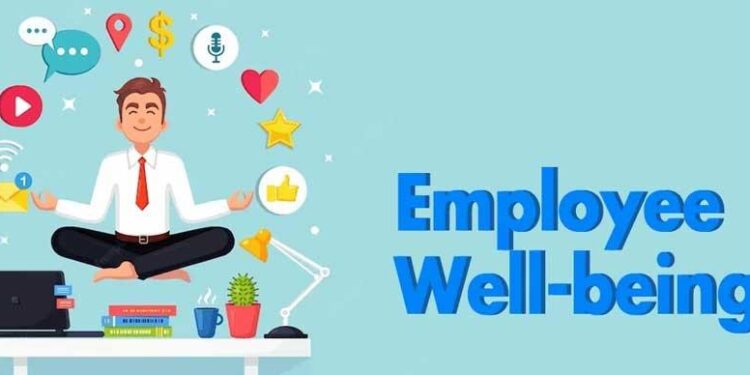Why Employee Well-Being Needs a Simpler Approach: Navigating the Complexities of Workplace Wellness in Alaska
In an era where employee well-being is increasingly recognized as essential to organizational success, many workplaces are finding themselves buried under layers of complex wellness programs that, while well-intentioned, may not yield the desired results. The emphasis on holistic approaches and multifaceted strategies often leads to confusion and disengagement among employees. In Alaska, where the unique challenges of remote work and variable landscapes further complicate matters, the need for a simpler, more accessible approach to employee well-being has never been more urgent. This article explores why organizations should refocus their efforts on straightforward, effective methods of supporting their workforce, ensuring that well-being initiatives are not just another obligation, but a genuine pathway to a healthier, more productive work environment.
Understanding Employee Well-Being: The Case for Simplicity in Workplace Strategies
In today’s fast-paced corporate environment, organizations often struggle with the complexity of employee well-being initiatives. Companies frequently overload their workforce with multifaceted programs that can overwhelm rather than uplift. A return to simplicity can enhance engagement and effectiveness. By stripping down to essential strategies, businesses can focus on what truly matters, including:
- Open Communication: Encouraging regular check-ins fosters a transparent environment where employees feel valued and heard.
- Flexible Working Conditions: Allowing employees to tailor their work environments—whether through remote work options or flexible hours—can significantly improve job satisfaction.
- Wellness Resources: Providing easy access to mental and physical health resources can empower employees to take charge of their well-being.
To support a streamlined approach, organizations can consider innovative models that prioritize simplicity without sacrificing impact. Research shows that setting achievable goals and ensuring clear expectations can promote a more vibrant workplace culture. The table below illustrates key focus areas that can drive employee well-being effectively:
| Focus Area | Description |
|---|---|
| Mindfulness Practices | A simple introduction of mindfulness breaks can help reduce stress and improve concentration. |
| Team-Building Activities | Regular, low-key team events can strengthen bonds and improve collaboration with minimal effort. |
| Feedback Mechanisms | Implementing anonymous surveys allows for honest feedback, promoting a culture of continuous improvement. |
Identifying Key Pain Points: Common Barriers to Effective Well-Being Initiatives
In the quest for effective well-being initiatives, several obstacles can hinder progress within organizations. Understanding these barriers is crucial for creating actionable solutions. Common issues include:
- Lack of engagement: Employees may feel disconnected from well-being programs that are poorly communicated or fail to resonate with their personal needs.
- Insufficient resources: Many organizations struggle to allocate adequate time, budget, and staff to develop and sustain meaningful well-being initiatives.
- One-size-fits-all approach: Programs that do not consider the diverse needs and circumstances of the workforce often miss the mark.
Moreover, organizational culture and leadership play pivotal roles in the success of well-being initiatives. Barriers such as:
| Barrier | Description |
|---|---|
| Lack of leadership support | When leaders do not prioritize well-being, it can lead to a perception that these initiatives are not important. |
| Resistance to change | Employees and management may be reluctant to adopt new practices, fearing disruptions to established routines. |
Addressing these challenges requires a thoughtful, inclusive approach that prioritizes employee input and fosters a culture of well-being from the top down.
Practical Solutions for Change: Streamlining Approaches to Enhance Employee Wellness
In today’s fast-paced work environment, enhancing employee wellness is more crucial than ever. Companies are often overwhelmed by complex wellness programs that fail to deliver results. A streamlined approach can simplify efforts and create a more positive impact. Organizations should consider integrating the following practical solutions:
- Regular Check-Ins: Establish bi-weekly wellness meetings to gauge employee satisfaction and address concerns.
- Accessible Resources: Provide a single digital hub where employees can access wellness tools, mental health resources, and fitness programs.
- Feedback Mechanisms: Implement anonymous surveys to collect insights into what wellness initiatives employees find most beneficial.
- Flexible Work Arrangements: Encourage remote work or flexible hours to reduce stress and promote a healthier work-life balance.
To visualize the effectiveness of these streamlined approaches, a comparison table can shed light on traditional versus simplified wellness strategies:
| Traditional Strategies | Simplified Strategies |
|---|---|
| Complex and rigid programs | Flexible, employee-driven choices |
| High implementation costs | Low-cost digital resources |
| One-size-fits-all initiatives | Personalized wellness plans |
| Limited employee engagement | Active participation through feedback |
Concluding Remarks
the necessity for a more streamlined and accessible approach to employee well-being is becoming increasingly apparent. As businesses in Alaska and beyond navigate the complexities of workforce management, simplifying well-being initiatives could lead to more significant engagement and healthier workplace cultures. With a focus on practical strategies over convoluted programs, employers can foster an environment that prioritizes mental and physical health, ultimately benefiting both employees and organizations. As the dialogue around workplace wellness continues to evolve, it’s time for decision-makers to reconsider their approaches, ensuring that employee well-being is not just a priority, but an attainable reality for all. Moving forward, it will be crucial for companies to implement these insights, paving the way for a more inclusive and supportive work environment where everyone can thrive.































